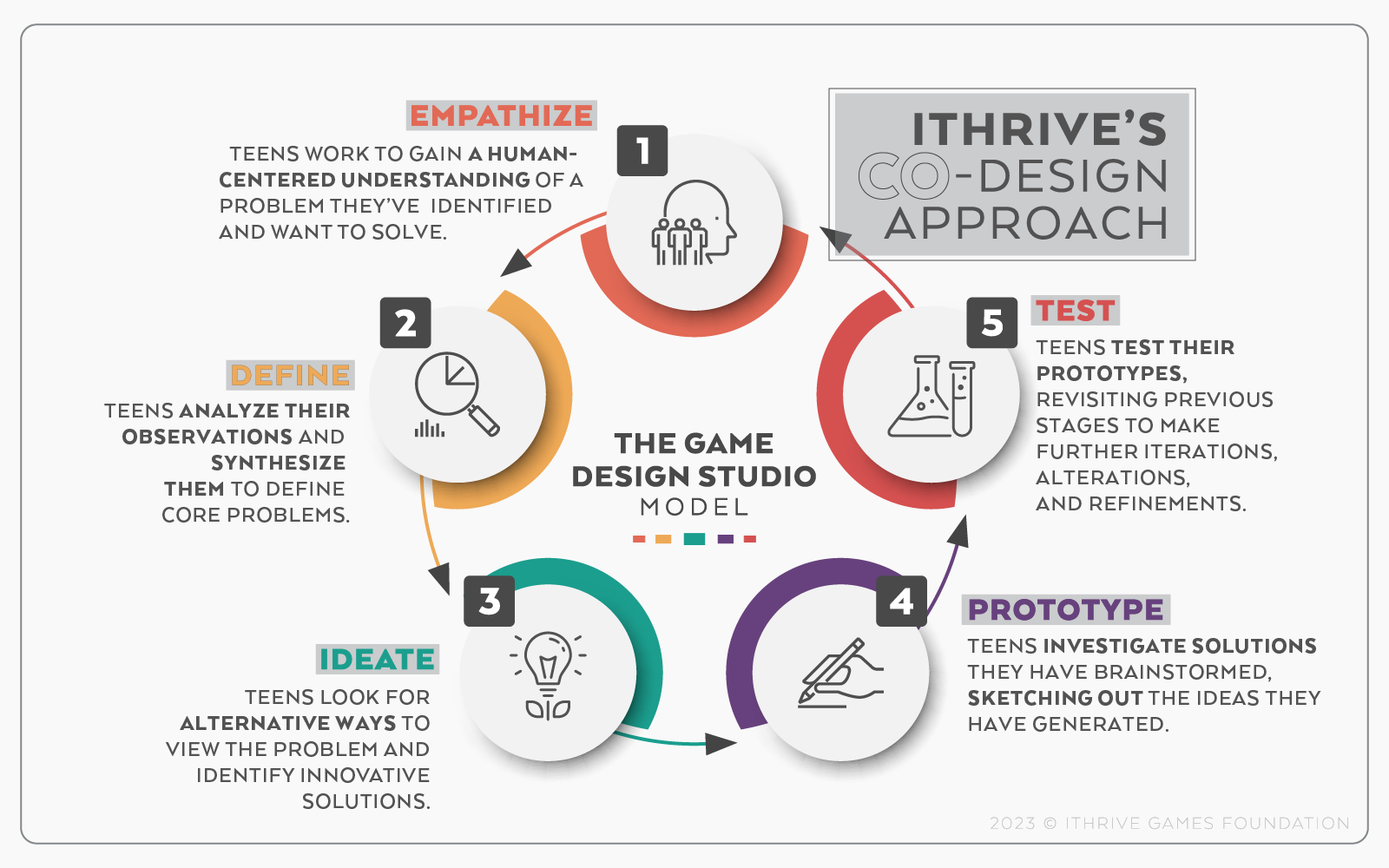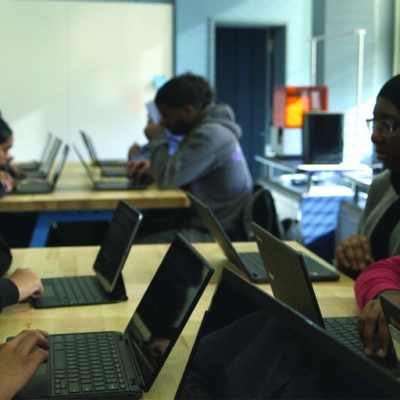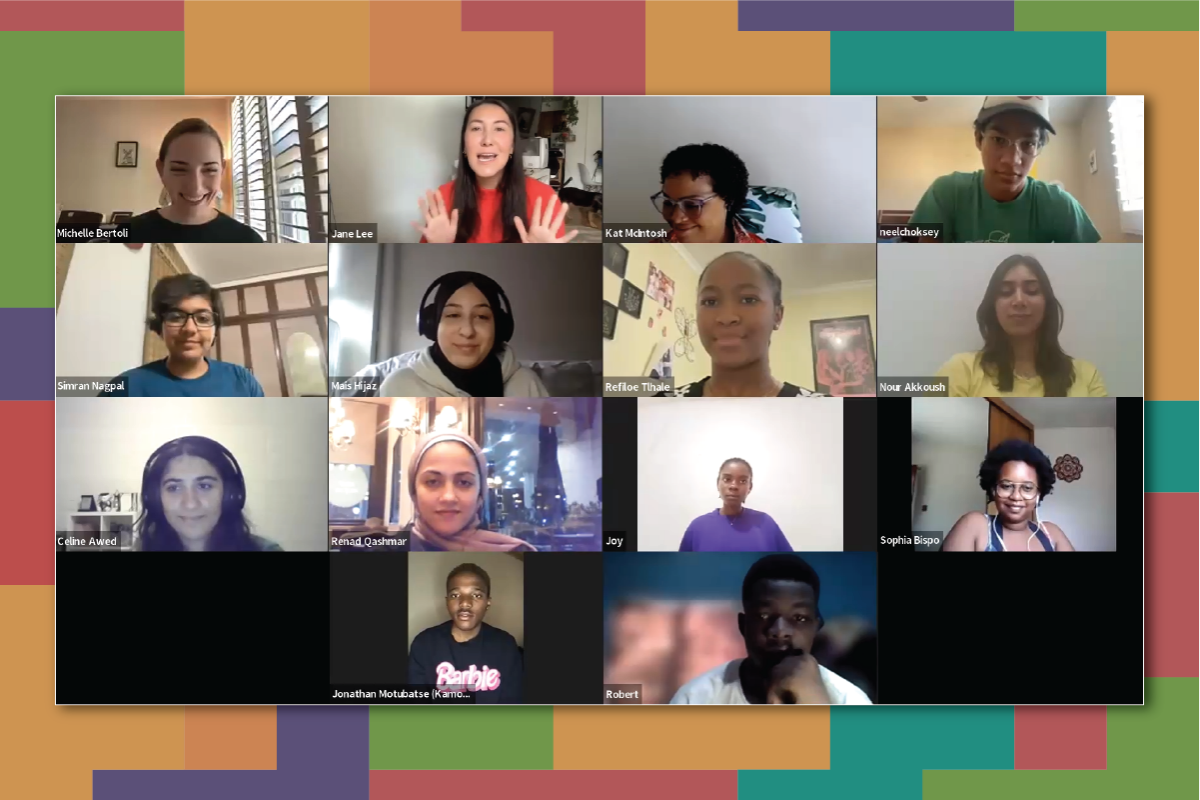
What is Power, and How Do We Get to Peace? Global Youth Have Answers.
Over the last year, we’ve been creating a Cold War LX alongside SMEs and genius youth co-designers powered by play, inquiry, and project-based learning.
October 27, 1962, was a day that could have changed the course of world history.
That Saturday, the U.S.S. Beale dropped a series of non-lethal depth charges onto the B-59, a Soviet Union-operated and nuclear-armed submarine found near the U.S. blockade line around Cuba. Used to deter underwater warfare and intended as a warning, the charges sought to force the B-59 to the water's surface.
The captain aboard the B-59 had no way of knowing these were intended as warning shots. He had no contact from Moscow for several days, meaning no instruction, and after plummeting deeper into the waters to shield from the U.S. Navy's pursuers, his sub could not pick up or monitor radio traffic. Mistaking these warning shots as live explosives, the captain angrily convinced his men to arm the sub's nuclear-tipped torpedo and prepare for an attack under the belief that he was witnessing the start of World War III. If it had not been for the protocol that required all three of the B-59's senior officers to agree before initiating a nuclear launch, it could have been.
Though the captain was in favor, the sub's second in command refused to give consent. Instead, he calmed the captain down and coolly convinced his fellow officers to wait for Moscow's orders. His deliberate, careful action in a moment colored by fear and threat, real and perceived, eventually brought the B-59 back to Russia without incident. Most people did not know of his impactful decision until over 40 years later.
Like many events during the four decades of global political tension known as the Cold War, this close call signified the world's fragility at the time. The decision-making on the B-59 also mirrors how crucial the social and emotional were, as it motivated and underpinned every geopolitical move that could, if not made carefully, segue and cement doomsday.
Over the last year and with funding by the XQ Institute, the iThrive Games team has been co-designing Diplomacy in Action, a innovative learning experience (LX) that invites high school students in U.S. history classrooms to explore how the social and emotional show up in the intricacies of Cold War geopolitics. The co-design team includes The History Co: Lab's Fernande Raine, Ludic Learning's Paul Darvasi, Professor Jeremi Suri, the Mack Brown Distinguished Chair for Leadership in Global Affairs at The University of Texas at Austin, XQ's Matt Owens, and over 60 young people. Over the LX's six weeks, students are immersed in the Cold War. Through constructive and collaborative play and inquiry- and project-based learning, students assemble their historical insights and social and emotional skills into what becomes a Peacekeeper's Toolkit. As they step into their roles as U.S. diplomats to foreign countries in the LX's concluding iThrive Sim multiplayer simulation game experience, the Toolkit is their practical guide, helping them manage conflict alongside their peers. By the end of the game-based learning experience, students walk away with a deeper understanding of how fear and threat states impact decisions, of how power steers and shows up in global and domestic conflict, and real-time practice of critical thinking, responsible decision-making, and negotiation in tense times—social and emotional skills transferable to their real lives.
A CO-DESIGNED LX: BRIDGING INTENT WITH APPROACH
At iThrive Games, we firmly believe that empathy narrows the gap between intent and impact.
In the early envisioning of the Diplomacy in Action LX, our collaborative team of subject matter experts with backgrounds in history, adolescent development, social and emotional learning, serious game design, and game-based learning shared hopes of this LX being a memorable one for teens, intended to be interactive and deeply engaging for them. To ensure this, iThrive employed its strengths-based, co-design approach with teens and young adults, engaging them as thought and design partners throughout the LX's development.
Learn more about iThrive's co-design approach here.
Knowing we further our empathy through community and co-design, we made it a priority to create co-design contexts supportive of discovery for young people, ones that supported their emotional safety, challenged them cognitively, and helped them surface and express their ideas. By enlisting their expertise, genius, lenses, and experiences through co-design, the youth co-designers who've worked alongside us have been vital to helping make the LX all the more relevant to the teens it will reach.
WHAT GLOBAL YOUTH CO-DESIGNERS SAY
Co-designing with young people is always a joy, and last November, when the iThrive team gathered virtually with 16 teens and young adults living in more than a dozen countries, was no different. Through the Global Nomads Group, a nonprofit that connects youth across difference and distance, our design team met with interns from their Content Creation Lab across two sessions where they helped us co-design surrounding elements of the LX and playtest a prototype of its simulation game component.
Aligned with our intent to make this learning experience one that effectively considered power in multiple expressions and culturally responsive definitions of what power is, it was truly an honor to welcome a global lens in the creation of it. By interweaving it with the views and perspectives of young people from across the globe, the LX becomes even more resonant for the learners it reaches, reflecting both the diversity in today's world and the inclusion that will be central to it.
Here are a few of the takeaways from our last co-design session with the Global Nomads Group, marking some of our most memorable moments of knowledge-building and knowledge-sharing:
'US VS. THEM': UNPACKING POLARIZATION
Our design team, seeking to make the Diplomacy in Action LX applicable to the real world, invited young people to share their views on division and unity in today's world.

Their perspectives and thoughts helped our team think even more creatively about how to meet young people where they are in how they view polarization—a phenomenon that, throughout the Cold War and history, concentrated power in echo chambers and reinforced and exacerbated conflict.

With their thoughts, our team expanded its operating understanding of powers' multiple expressions.
ASSESSING POWER OVER, POWER WITH, AND POWER TO
The 'Power Y' infographic appears frequently throughout the Cold War-inspired Diplomacy in Action LX and is a visual representation of three expressions of power—power over (meaning control), power to (meaning capability to do something), and power with (meaning shared power grown through partnership and collaboration).
To support the instructional design of a lesson plan for the LX that encouraged students to explore these expressions of power, our design team invited Global Nomads Group's youth interns to map and share how power manifests in their lives, communities, and screens.
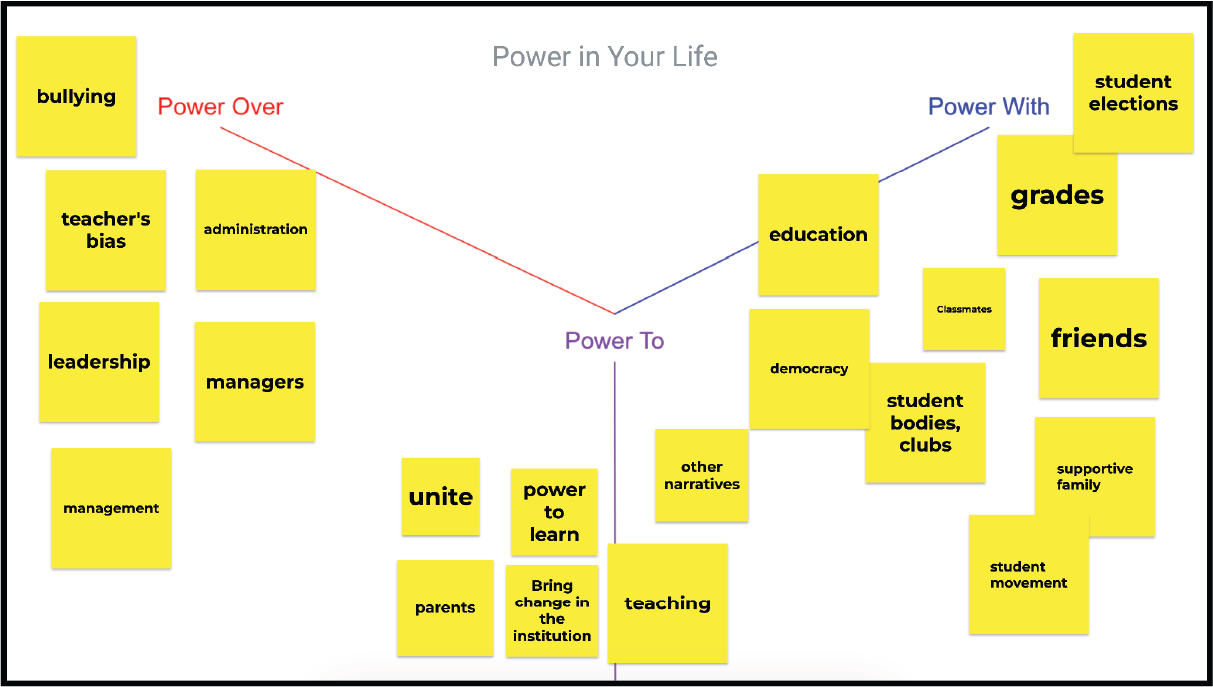

Their insights influenced how the LX prompts learners to plot power plays and chart diplomacy, using real-life examples to help them understand how power was expressed throughout the Cold War.
THE MAKINGS OF AND PATHWAYS TO PEACE
One of our favorite questions presented to youth co-designers throughout this LX's development prompts them to dive into the makings of peace. Our design team asked the group about the tools needed to combat division, manage conflict in today's world, and unite people across differences, much like Global Nomads Group's mission.
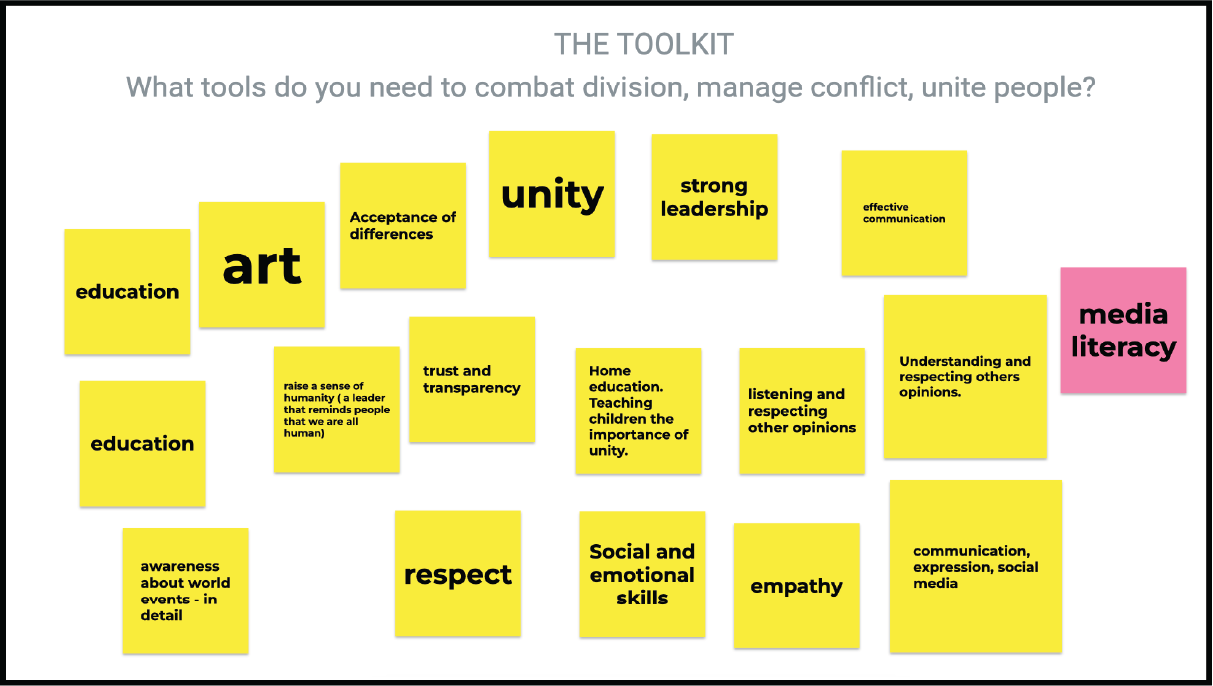
We asked the co-designers to convey what's needed at a micro and individual level and the tools leaders today need to make peace real. Many of their responses captured an array of skills, practices, and initiatives they viewed as necessary to achieve that goal.

From their thought partnership came directive and discernment on which surrounding elements were ultimately weaved into Diplomacy in Action's six-week LX of the many aspects of the Cold War that could've been included and explored. Their thoughts on what would be in a toolkit meant to support peace helped us shape the inquiry-based learning tracks throughout the LX, ensuring they align with what they view as vital to diplomacy today.
A special thank you to the young people at the Global Nomads Group, their facilitators, and all who joined us to help co-design Diplomacy in Action and co-create an offering reflective of ideas beyond our borders. Below, check out a highlight reel of the full co-design session, and sign up for iThrive's mailing list to be notified when the LX is available for piloting!
